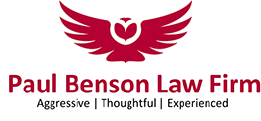I Guarantee a 24 Hour Response
What To Do
Seven Things to Do After Your Car Crash
1. Pull Over to a Safe Area
Before you do anything else, pull over to a safe area. If you can’t pull over to a safe area, stay in your car until the police arrive. Don’t try to run across a highway or busy street because you may be more injured than you realize. But if your car is drive-able, it is best to get to a safe place out of the flow of traffic so that you avoid getting into a second crash. Sometimes people think that they need to stay in the same position as when the crash happened, but that is not true.
2. Call the Police
Don’t give into peer pressure. Don’t try to handle this crash by yourself. Call the non-emergency number for the local police department right away to report the crash. The Janesville Police non-emergency number is 608.757.2244. Beloit’s non-emergency number is 608.364.6807. If you’re on the highway, you can call the Wisconsin Highway Patrol at 608.374.0513.
Sometimes the other driver will insist that he will “handle everything” and there is no reason to call the police. This often means the driver does not have auto insurance or has a suspended license. Even if the other driver shows you an insurance card, there is no way to confirm the policy is actually in effect without calling the insurance company. Don’t risk it. Call the police and insist that the other driver wait for the police to arrive. Police officers are professional accident reporters. An official police report will be invaluable to helping you prove that the other driver is liable and will help you win your case.
Tell the police officer everything. Don’t minimize the impact or your injuries. If you are hurt, tell the police officer that you are hurt. If it was a big impact, tell the police officer it was a big impact. Finally, make sure you give your detailed version of the crash to the police officer. The police officer will document whether the drivers were injured and advise which driver he believes to be at fault. When it comes time to settle your injury case, the police report is a very important piece of evidence that will impact your case.
3. Take a Photo of the Other Driver’s License Plate
Immediately after calling the police, take out your phone and take a photo of the other driver’s license plate. If the other driver tries to flee the scene of the crash to avoid responsibility, you will have a way to find him. Take a photo of the other driver’s car too. That information will help the police catch him, if he tries to flee. If the other driver provides his auto insurance card, take a photo of both sides of the card and make sure that the policy is up to date and in effect.
4. Document the Damage to your Car
It is important to immediately document all the damage to your car. If you forget to report some of the damage, there will be no way to prove that the crash caused the damage (rather than some subsequent car accident). Take lots of photos of every dent and scratch. Check under the hood for damage to your engine. Look under the car for damage to the car’s frame or axles. Take careful notes of all of the damage that you find to your car and then organize your notes into a clear, typed summary. A clear, thorough summary will help you get full compensation for your property damage. The State of Wisconsin only requires drivers to carry $10,000 in property damage coverage. According to USA Today, the average cost of a new car is $33,560. Unfortunately, the responsible driver may not have sufficient insurance coverage to fix your car. A good car accident attorney can help you find other insurance policies that may provide coverage for your car. Make sure that your personal injury lawyer will help guide you through the property damage part of your claim.
5. Document any Evidence in the Road
This is the hardest step. However, it could be crucial to proving liability in a disputed case. Only if it is safe to do so and if the road is completely blocked off, take pictures of any broken car parts or shattered glass left in the road. Zoom out to provide context of where the crash happened. If there are any tire skids in the street, take detailed photos to show where the car started to skid and where it came to a stop. Again, zoom out to provide context for where the crash happened. Again, only do this if it is safe. Don’t go into traffic to get these pictures. If possible, ask the police officer to take the pictures for you on her camera or help you get the photographs.
6. Write down Witness Information
Independent witness statements are very persuasive evidence in disputed liability cases. Police officers have limited time and often need to go to their next call for service. Take down the name, phone number and email address for any witnesses who saw the crash. Getting as much contact information is important because people move, change their phone number or get a new email address.
7. Get Checked out at the Hospital
If you are seriously injured, you need to go to the hospital. If you have concussion symptoms or internal pain, it is especially important to get immediate medical attention. If you don’t have health insurance, you should still go to the hospital and explain that you were in an auto crash and there will hopefully be auto insurance coverage for your injuries.

